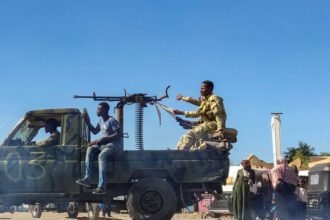In Madagascar, security forces have used tear gas to disperse the crowd as nationwide protests show no signs of slowing down. The protesters, mostly from the General Z movement, returned to the streets in the capital Antananarivo, demanding action on the ongoing electricity and water scarcity.
Although President Andrey Rajolina announced the disintegration of his government in an attempt to reduce tension, the protesters remained dissatisfied. They continue to call for accountability after violent clashes, resulting in many deaths and injuries.
The recent efforts of the government, including the Energy Minister and promising reform, have reduced the public anger very much. The protesters demanded more comprehensive changes, including an immediate response to the President’s resignation and deteriorating situation.
What Sparked the Ongoing Unrest?
The Madagascar protests began last week in Antananarivo and quickly spread to at least eight cities. The trigger was a surge in power outages and water supply failures that disrupted daily life for thousands.
Calls to protest were widely circulated through social media, especially among youth groups. Organizers have accused the government of failing to address long-standing infrastructure issues, while also expressing frustration with economic hardship and lack of transparency.
A large banner at one recent protest read, “We don’t want trouble, we just want our rights,” reflecting the sentiment of peaceful resistance despite the clashes. Here is the link to our article on the Indonesian Protest.
How Did the Government Respond?
President Rajoelina addressed the nation, acknowledging citizens’ frustrations and announcing the termination of the current government. He confirmed that applications for a new prime minister would be accepted over three days, with interim ministers remaining in charge until a new administration is formed.
However, these steps have not quelled the unrest. Many see the president’s response as too little, too late—especially following incidents where protesters were injured or killed by security forces.
International human rights organizations have also raised alarms about the use of excessive force. The United Nations has urged Madagascar’s security forces to refrain from disproportionate responses and to release any individuals detained without cause.
How Has the Violence Affected the Country?
Reports from multiple cities indicate that the situation has turned violent in some areas. Tear gas, rubber bullets, and even live ammunition have been used to disperse demonstrators. In Antananarivo, a dusk-to-dawn curfew was imposed following incidents of looting and vandalism.
Protest leaders claim that criminal groups, not associated with their movement, are responsible for the destruction. They allege that government-backed agitators may be involved in efforts to delegitimize their cause.
Meanwhile, government officials have dismissed the UN’s casualty figures, claiming the numbers are inflated and based on unverified reports. Here is the link to our article on Angola Protest Clashes.
What’s Next for the Youth Movement?
Despite increasing pressure, the Gen Z-led movement has vowed to continue its demonstrations peacefully. Organizers remain active online and have called for renewed gatherings in the coming days.
President Rajoelina has expressed a willingness to meet with youth leaders to open dialogue. However, protestors insist that true reform must begin with full accountability for the recent violence.
The current wave of Madagascar protests marks the most serious political crisis since Rajoelina’s re-election in 2023. The situation remains fluid, with both sides holding firm to their positions.
Final Thoughts
Madagascar protests have underlined deep public disappointment over governance, basic services, and civil rights. As the stress increases, the government faces increasing pressure to make real improvements and to attach to the citizens to be meaningful, especially its youth. Without tangible action, unrest can destabilize one of the most politically delicate countries in the region.








